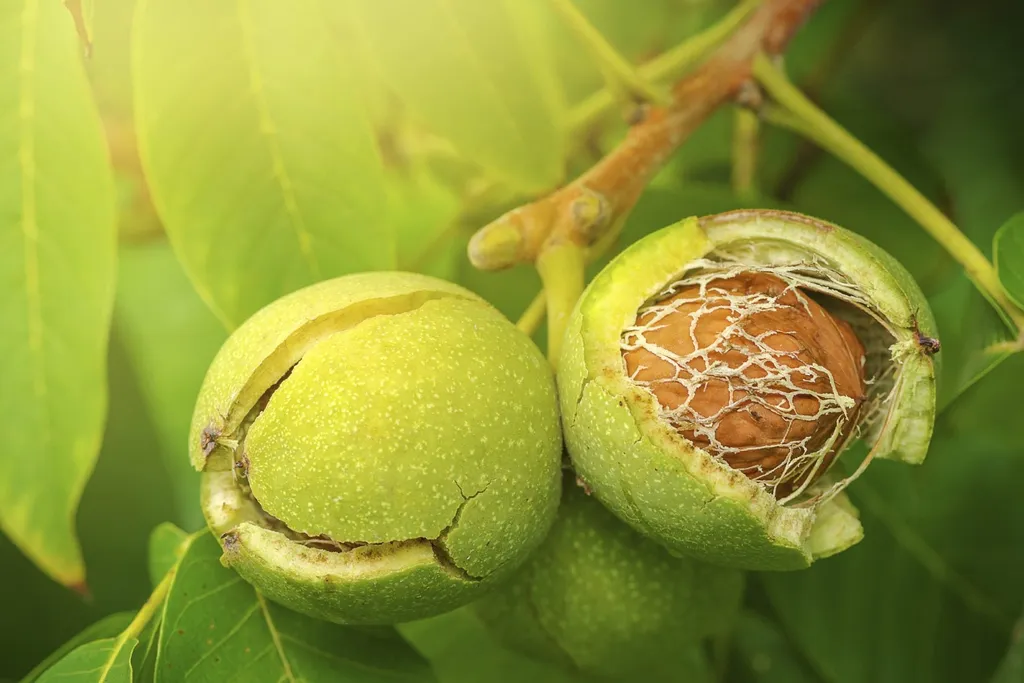Walnut trees are a valuable addition to any landscape, known for their dense wood, broad leaves, and most importantly, their nutrient-rich nuts. Whether you’re a backyard gardener or manage a larger orchard, knowing the right time to harvest walnuts can make all the difference. Picking walnuts at the right moment ensures maximum flavor, ease of processing, and a bountiful yield. This guide will walk you through the signs to look for and how to properly harvest walnuts for the best results.
Understanding the Walnut Growth Cycle
Before diving into the specifics of when to pick walnuts, it’s important to understand their growth cycle. Walnuts grow inside a green outer husk, and as they mature, the husk starts to split open. Inside this husk is the hard-shelled walnut that we consume. The timing of the harvest depends on the walnut’s maturity, and picking them too early or too late can affect the quality.
When Are Walnuts Ready to Harvest?
1. Color Change in the Husk One of the most prominent signs that walnuts are ready to pick is a color change in the husk. The outer husk begins green, but as the walnut matures, it turns yellow and eventually black. When you see that the husk is splitting and changing color, this is a good indication that the walnut is ready to be harvested.
2. Walnut Fall As walnuts mature, they naturally fall from the tree. This is one of the simplest methods to know when they’re ready. However, don’t rely solely on fallen walnuts, as animals may get to them first. Harvest them soon after they hit the ground to avoid losing your crop.
3. Shake Test If your tree has plenty of walnuts that haven’t fallen yet, you can gently shake the tree. Mature walnuts will easily drop to the ground. However, ensure you don’t damage the tree or immature walnuts in the process.
4. Browning Leaves Walnut trees will also give signs through their leaves. As the harvest time approaches, the tree’s leaves start to turn yellow and fall off, another natural signal that the nuts are ready.
How to Properly Harvest Walnuts
Now that you know when to pick walnuts, it’s important to understand the correct harvesting method to preserve their quality.
Step 1: Gather Fallen Walnuts Daily During the walnut harvesting season, check your tree daily for fallen nuts. This prevents animals from stealing your crop and ensures that the nuts don’t spoil.
Step 2: Use Gloves When Handling The husks can stain your hands, so it’s wise to wear gloves when picking up walnuts. The natural oils from the husk are difficult to wash off and can irritate the skin.
Step 3: Remove the Outer Husk Once you’ve collected the walnuts, you’ll need to remove the outer husk. This can be done by hand or with a knife. Discard any walnuts with moldy or decaying husks, as they could indicate spoiled nuts inside.
Step 4: Dry the Walnuts After hulling, walnuts must be dried to preserve them for long-term storage. Spread them out in a single layer in a cool, dry place for several weeks. Stir them occasionally to ensure even drying. You’ll know the walnuts are fully dried when you shake them and hear the nut rattling inside the shell.
Step 5: Store in a Cool, Dry Place Once dried, store walnuts in a breathable container, like a mesh bag, in a cool, dry area. If you plan to keep them for an extended period, consider refrigerating or freezing them.
Signs of Immature or Overripe Walnuts
Immature Walnuts
If harvested too early, the walnut won’t have developed its full flavor, and the nut inside may be soft or rubbery. Immature walnuts are often encased in a fully green husk that hasn’t started to split yet.
Overripe Walnuts
If left on the tree or ground too long, walnuts can become overripe. The husk will turn black, and the nut inside may spoil or become discolored. Overripe walnuts are more likely to suffer from mold, rot, or be infested by insects.
Conclusion: The Perfect Walnut Harvest
Harvesting walnuts at the right time is crucial for maximizing flavor, texture, and storage potential. By observing the color of the husk, the natural drop of the walnuts, and the tree’s signs, you can time your harvest perfectly. Remember, proper handling and drying are key to enjoying your walnuts throughout the year.
By following this guide, you’ll ensure that your walnut harvest is not only abundant but also of the highest quality. Happy harvesting!

